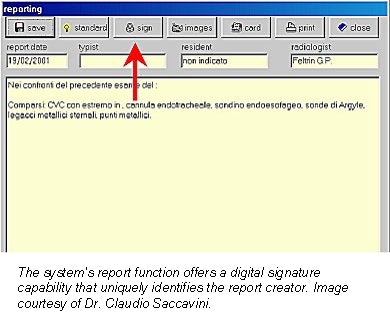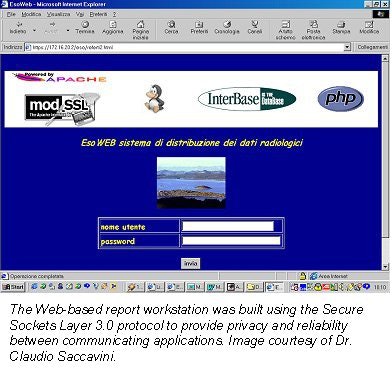
Setting up a PACS is expensive, and it can get even more so when you're trying to integrate multiple modalities from multiple manufacturers running multiple protocols. But an Italian group did it for less -- much less -- by using off-the-shelf options and open-source code to build their network.
At the 2001 European Congress of Radiology in Vienna, Dr. Claudio Saccavini from the department of medical and diagnostic sciences at the University of Padova in Italy talked about his team's efforts to build a Linux-based PACS. Linux is an open-source operating system (OS) released by Linus Torvalds at the University of Helsinki, Finland in October 1991. It is distributed free with source code from many locations on the Internet. Since its release date, many applications -- some free, some commercial -- have been written to take advantage of the OS.
The development group at the University of Padova had two goals: developing a completely open-source PACS, and creating a new archive strategy. They began with a server running Mandrake 7.2 (MandrakeSoft, Altadena, CA), a Linux variant, as the backbone of their PACS. In addition, the group selected Interbase 6.0 (Borland, Scotts Valley, CA) as their database engine, and used Delphi 5.0 (Borland) to code the user interface.
 |
The team then selected a DICOM server application to connect the modalities in their department. They developed the application around DICOM server source code from the OFFIS (Oldenburger Forschungs -- Und Entwicklungsinstitut Fur Informatik -- Wekzeuge Und-Systeme) library at the University of Oldenburg, Germany, and the CTN library at the Mallinckrodt Institute of Radiology in St. Louis, MO.
Once the system backbone was developed, the group began to connect the department’s modalities: a CT (Emotion, Siemens Medical Solutions, Iselin, NJ); one MR (Harmony, Siemens); two computed radiography (CR) units (AC3, Fujifilm Medical Systems, Stamford, CT); one digital radiography unit (Advantix, GE Medical Systems, Waukesha, WI); and two reporting workstations (a MagicView by Siemens and a HiC 655 by Fuji).
In addition, the department has four PC-based reporting workstations that run OSIRIS DICOM-viewing software (developed at the University Hospital of Geneva) on a Web-based platform written by the researchers.
 |
The development group chose online high-capacity fast hard disks instead of an optical disk jukebox as their archive strategy. The major factor in the decision was cost.
"A 500-GB online hard-drive archive costs 7 euros ($6.25 U.S.) per MB vs. 26 euros ($23) per MB of optical-disk jukebox storage," Saccavini said. He noted that the department archives all its images on CD-ROM in order to provide an off-line archive that meets Italian and European Union legal standards.
Saccavini reported a high degree of user acceptance and satisfaction with the PACS as it has been implemented over the preceding six months, a factor he attributed to the fast image retrieval from the online archive. However, he did note that the high number of CD-ROMs created by the department has it leaning toward DVD as a long-term archive platform.
Saccavini and his team plan to distribute their PACS software on the Internet as a no-cost open-source application in the coming months at http://www.rad.unipd.it/raynux/.
By Jonathan S. BatchelorAuntMinnie.com staff writer
April 24, 2001
Linux penguin graphic courtesy of Larry Ewing.
Related Reading
Creativity, hard work produce PACS-free productivity gains, June 7, 2000
Click here to post your comments about this story in our PACS Digital Community. Please include the headline of the article in your message.
Copyright © 2001 AuntMinnie.com



















